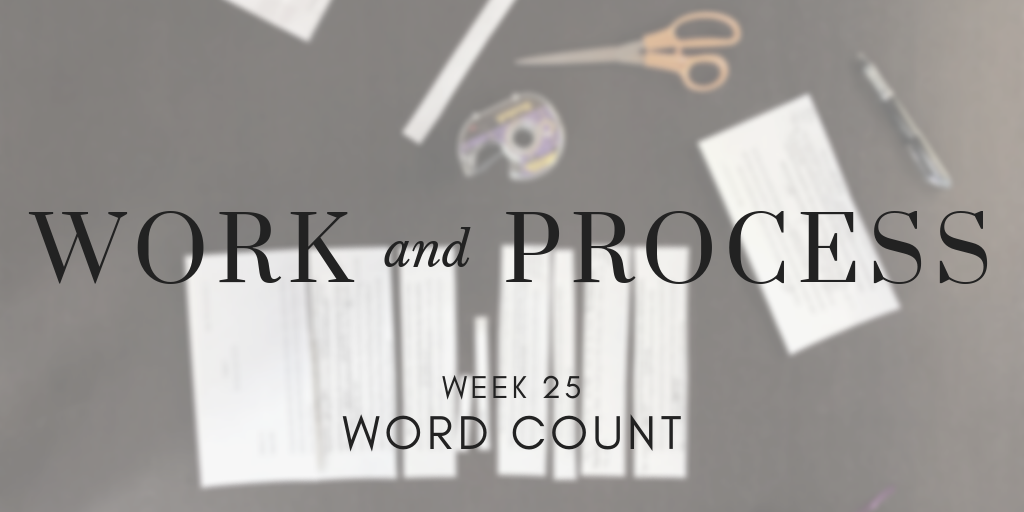|
I am an overwriter. I have been for as long as I can remember. I add paragraphs of description because I can’t write a scene unless I know exactly where everything is and what everything looks like. I start every scene pages before it actually has to begin. My solution to most story problems is “throw more words at it.”
Overwriting is great because it gives me a lot of material to work with when I go back to revise. It’s awful and frustrating because pretty much all of my work ends up too long. When I first started querying The Reader in 2014, the manuscript was 121,000 words. (For reference, at the time, the conventional word count for young adult fantasy topped out at 100,000 words.) Unsurprisingly, I got a ton of rejections. So, after consulting with some lovely and generous professionals, I stopped querying and went back to revising. By the time Pitch Wars, an online mentoring and pitch contest, rolled around, I had cut 14,000 words, so I entered the contest with a 107,000-word manuscript. That was still a little long for queries, but thank the muses, Renée Ahdieh, author of Flame in the Mist and the forthcoming, The Beautiful, was willing to take me on as a mentee. Over the next two months, I cut another 10,000 words, and by the time I signed with an agent, The Reader was sitting at a pretty 97k, 24,000 words shorter than it was when I started querying. As might be obvious from this little anecdote, I’ve become quite familiar with cutting down my word count, and I’d like to share some suggestions in hopes that they’ll be helpful to other overwriters out there. On the internet, I’ve seen advice like: Do a document search for every “just” or “that” and delete all of them. Or: Cut all instances of filtering. A note: Filtering is where a description first has to go through a character’s perspective, like, “He could see the mountains rising out of the fog in the distance.” In this example, “He could see” is filtering, so you could remove it to change the sentence like so: “The mountains rose out of the fog in the distance.” In general, this is the kind of “one size fits all” advice that I find supremely unhelpful. (Like “Show. Don’t tell.”) Every story is different. Every scene or character requires a different touch. So while I think it’s great to eliminate unnecessary words, because it keeps the sentences tight and uncluttered, I believe that some words that seem unnecessary can, in fact, be useful to the storytelling. The repetition of “just,” for example, could be part of a character’s voice, demonstrating their need to have things be simple. Or the use of “that” could be for rhythm and clarity. Descriptions that are filtered through a character’s perspective might tell us that the character is an observer, or they might be a hint that the character’s observations are too biased to be trusted. Instead of these big search-and-deletes, when I want to cut down on word count, I look for bigger passages that don’t serve the needs of the story: Sentences that repeat information or only serve one narrative purpose (see my Rule of Three (But Not Always Three) Things) can be cut, rephrased, or combined. Paragraphs that, while adding interesting character details or beautiful descriptions, don’t contribute to the forward motion of the plot can often be removed. When I was revising The Reader, I’d cut entire scenes or chunks of scenes if they didn’t get right to the point--often the beginnings or endings while I was working my way into a chapter or couldn’t figure out how to end one. Of course, there are also the Big Changes to consider: Sometimes characters can be eliminated entirely, or at least combined with other characters. Sometimes subplots that don’t tie in to the main story can be removed or streamlined. These can feel difficult to tackle, because changing something big often creates a ripple effect of smaller changes throughout the rest of the story, but I’ve often found that the removal of an unnecessary character or plot thread doesn’t affect as much as I think it will. Then, if I still need to lower my word count, I figure out how many words I need to cut, divide it by my page count, and try to cut that many words per page. For example, in a 300-page manuscript that I want to cut 3,000 words from, I try to cut 10 words per page. 10 words at a time often seems more doable than 3,000 total, and it forces me to be really demanding about how I’m using every word on each page. To be honest, though, it rarely works out that I cut my target amount every time. Sometimes I’ll cut more. Sometimes less. Sometimes nothing. But overall, this process, however, not only helps me closer to my target number of words but also polish each page to a shine. In sum, when it comes to my great adversary, the word count, I try to prioritize the needs of the story, adhere to my Rule of Three (But Not Always Three) Things, and go big before I go small. I hope this helps you sharpen your editing scissors, my fellow overwriters. Let’s get to work! Comments are closed.
|
ARCHIVES
February 2024
CATEGORIES |


 RSS Feed
RSS Feed